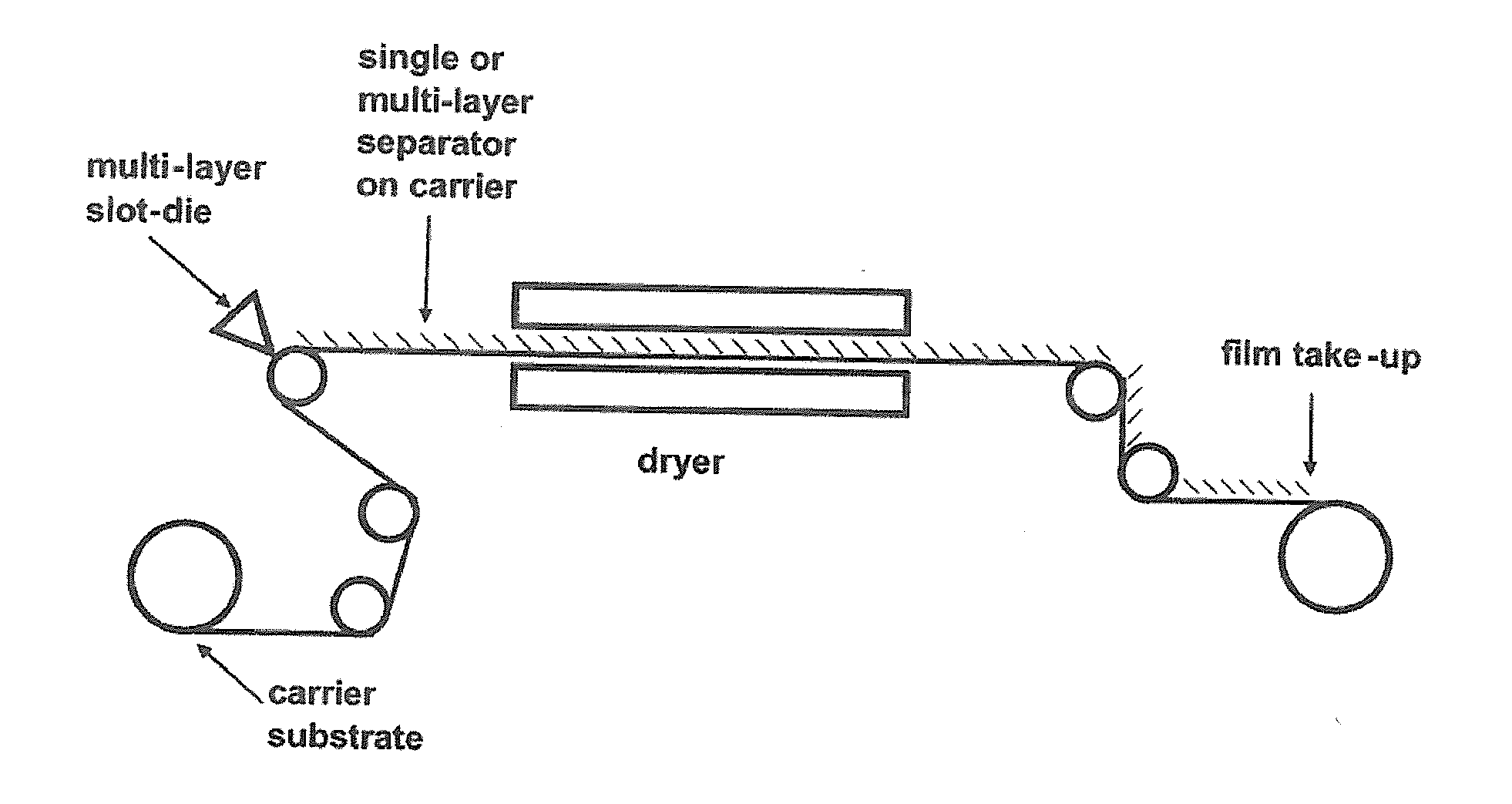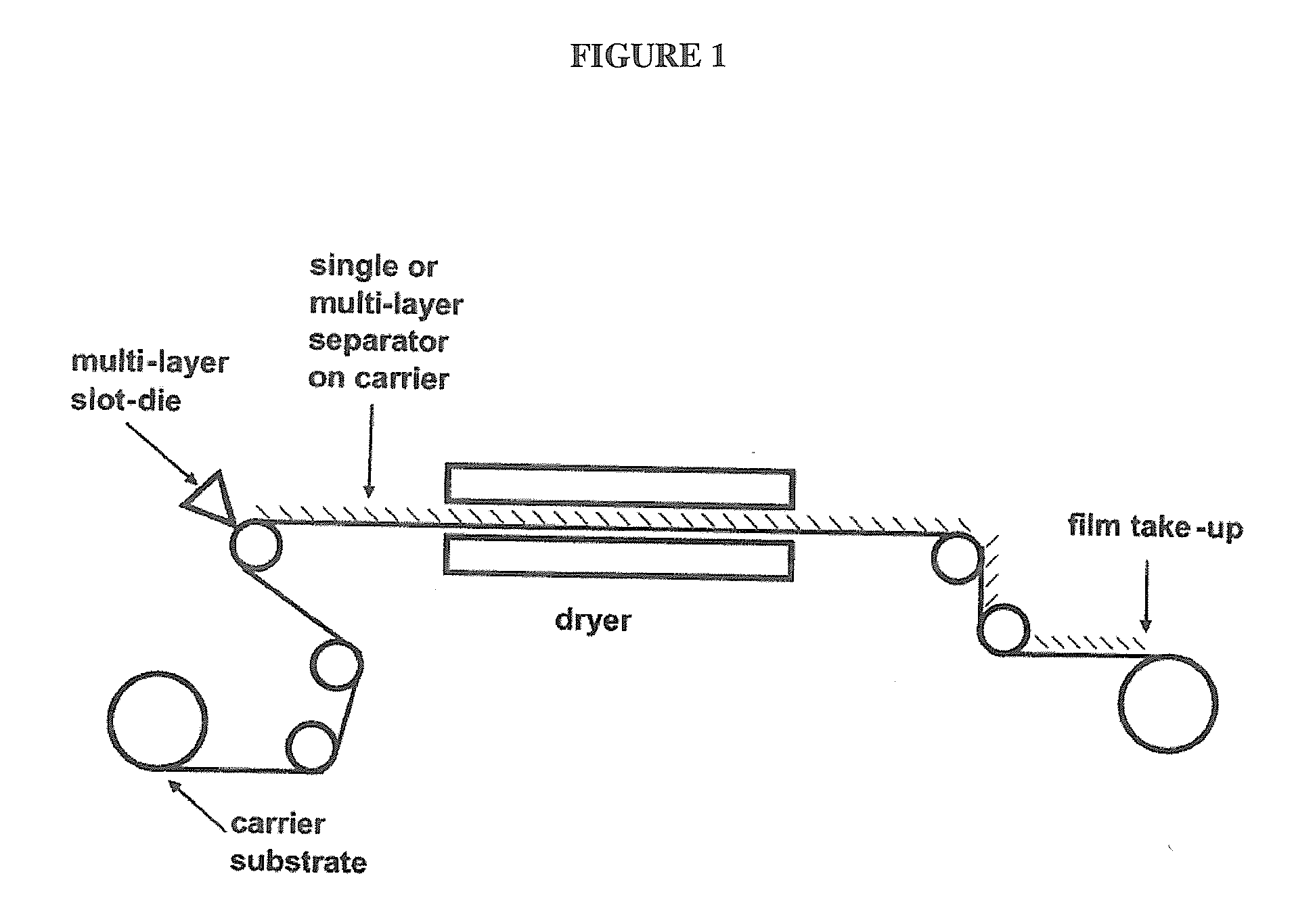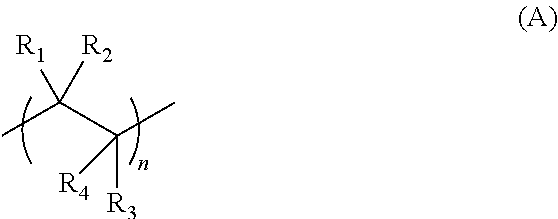Electrode separator
a technology of electrochemical separator and separator plate, which is applied in the direction of cell components, cell component details, chemistry apparatus and processes, etc., can solve the problems of shorting failure, inability to recharge with useful charge efficiency, and high requirements for separators for secondary batteries
- Summary
- Abstract
- Description
- Claims
- Application Information
AI Technical Summary
Problems solved by technology
Method used
Image
Examples
Embodiment Construction
[0037]The present invention provides a separator for use in an alkaline electrochemical cell comprising a QA polymer material, wherein the separator is substantially resistant to oxidation by silver oxide.
I. DEFINITIONS
[0038]As used herein, “substantially resistant to oxidation by silver oxide” refers to a chemical property of a separator (e.g., a single layered separator or a multilayered separator) or an active layer thereof, wherein the separator or active layer is substantially inert to chemical oxidation by silver oxide. For example, the separator or active layer is inert to chemical oxidation by silver oxide for a period of at least 1 day and a temperature of at least 40° C. (e.g., at least 45° C., at least 50° C., or at least 60° C.).
[0039]As used herein, “cross-link” or “cross-linked” refers to a covalent bond between two or more polymer chains, or a structural property wherein two or more polymer chains are covalently bonded together. Cross-links can be formed by chemical r...
PUM
| Property | Measurement | Unit |
|---|---|---|
| Fraction | aaaaa | aaaaa |
| Weight | aaaaa | aaaaa |
| Concentration | aaaaa | aaaaa |
Abstract
Description
Claims
Application Information
 Login to View More
Login to View More - R&D
- Intellectual Property
- Life Sciences
- Materials
- Tech Scout
- Unparalleled Data Quality
- Higher Quality Content
- 60% Fewer Hallucinations
Browse by: Latest US Patents, China's latest patents, Technical Efficacy Thesaurus, Application Domain, Technology Topic, Popular Technical Reports.
© 2025 PatSnap. All rights reserved.Legal|Privacy policy|Modern Slavery Act Transparency Statement|Sitemap|About US| Contact US: help@patsnap.com



